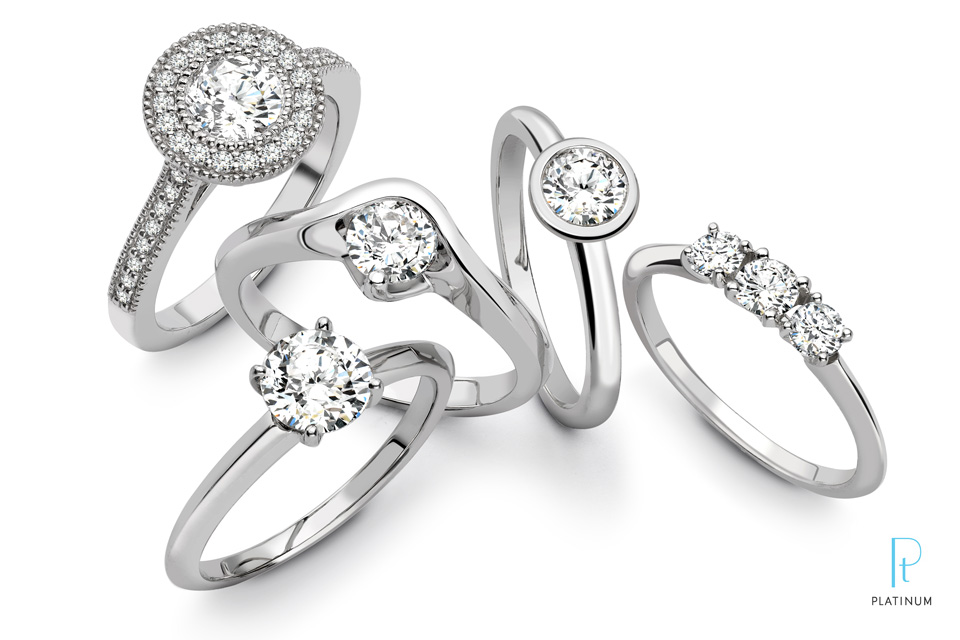Diamond jewelry is often at the top of a woman’s holiday wish list but getting her a gift that she’ll love doesn’t have to be complicated. In the second installment of our 2013 Holiday Buying Guide series, you will learn the basics of what to look for when shopping for diamond jewelry.
The first thing to know is that not all diamonds are created equal. In fact, every diamond is unique, which makes buying a diamond seem all the more challenging. For starters, how do you compare them? To protect consumers and help everyone better understand diamond quality, GIA created the 4Cs, now globally accepted as the language used to describe diamond quality. The 4Cs are so universal that diamonds are valued by how they measure up to each of the Cs. Being familiar with the 4Cs not only helps you better appreciate each diamond’s unique beauty, but also understand its price.
Every woman knows ‘good things come in small packages’ and this short 4Cs primer will get you well on your way to making sure the gift you give her this holiday is one that will delight.
Color
GIA D-to-Z Color Grading Scale measures the degree of colorlessness of a diamond, as compared to a set of master stones of established color. D is the highest grade representing colorless. As you go down through the scale, the diamond is picking up more yellow or brown color. Colorless diamonds are the most rare, and their price will reflect their rarity. Even the slightest hint of color can make a dramatic difference in value. This interactive tool shows you the subtle differences in color.
Clarity
Few things in life are perfect, and diamonds are no exception. Diamonds have internal features, called inclusions, and surface irregularities, called blemishes. Clarity grades assess the number, size, relief, nature, and position of inclusions and blemishes. Flawless is the top grade in the GIA Clarity Grading Scale, and flawless diamonds are so rare that it’s possible to spend a lifetime in the jewelry industry without ever seeing one. There are 11 clarity grades assigned to a diamond, and the fewer inclusions and blemishes, the higher the value.
Cut
Cut is the finished shape of the gem and the number and angles of its facets. The GIA Diamond Cut Grading System for standard round brilliant diamonds (still the most popular diamond shape and cutting style) has five cut grades ranging from Excellent to Poor and takes into consideration not only the proportions, polish and symmetry, but also visual appearance. Many people mistakenly use the term “cut” to refer to the diamond’s shape. Diamond shapes other than round brilliant are called fancy shapes, and include marquises, pears, ovals, hearts, and triangles to name a few.
Carat Weight
As most people know, diamonds are priced by weight. Diamonds are weighed to a thousandth (0.001) of a carat, which is 0.200 grams, and then rounded to the nearest hundredth, or point. These exact calculations are important; fractions of a carat can mean price differences of hundreds—even thousands—of dollars. Only one in 1,000 diamonds is more than a carat, and this rarity means that larger diamonds of the same quality are worth more per carat. In other words, a two-carat diamond will often cost more than the total of two one-carat diamonds, because of a higher per carat cost.
For even more information, GIA created the 4Cs app, available for iPhone, iPad and Android ®, which includes videos and interactive tools explaining each of the 4Cs in greater detail. It also has a useful tool called “My Diamond Wish List” where you can save and compare GIA-graded diamonds from different jewelers as you’re shopping this holiday season.
Going to a jeweler with a basic understanding of the 4Cs will help tremendously in your ability to compare diamonds and talk knowledgably with the salesperson.
Now that you have a basic understanding of the 4Cs, you’ll want to know how to make sure the diamond you’re buying has the qualities you’re looking for. For more about GIA grading reports, stay tuned for the next installment in our 2013 Holiday Buyers Guide.
Updated: GIA report scales have been updated with the newest scales as of May 2014
